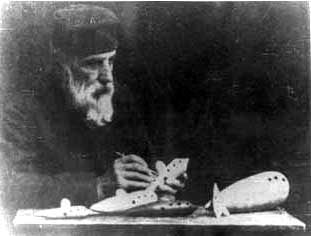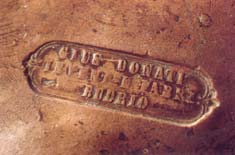|
The ocarina belongs to a very old family of instruments, believed to date back over 12,000 years, with varied versions made of bone, clay, wood and other materials. Many cultures have used them for song and dance. Variations have come from China, Japan, the Americas and they came to Europe via the trade routes of Eurasia.  Giuseppe Donati Giuseppe Donati The modern Ocarina used throughout the world today was invented in Budrio, Italy, during the mid-nineteenth century by Giuseppe Donati. Its shape recalls the elongated ovoid profile of a goose (oca in Italian) without the head: the name is derived from ucarina, diminutive of oca in Bolognese dialect.  Donati invented the modern version of the ocarina in 1853 at 17 years old. Donati built a variety of large and small ocarinas tuned to each other, making it possible to place in concert with each other. Donati had made five ocarinas of different sizes, each having holes for all ten fingers, which ranged from bass and treble, an extension of notes tuned to the piano. With the help of other musicians, he assembled the "Concert of Ocarinas", each evening performing around town playing in taverns and private houses. The haunting sound of a vintage, bass ocarina is played in this video. The town of Budrio in the province of Bologna hosts the International Ocarina Festival each year in early spring. It's an event dedicated to the sound and atmosphere created by the ocarina, with the participation of guest musicians and makers from all over the world. The Festival is organized by the municipal district of Budrio with concerts, musical entertainment on the streets, exhibits, folk dancing and many other activities. This video shows the possibilities of using the ocarina for complex, classical musical performances, with a full range of octaves available for each musician.
|
Categories
All
Archives
July 2023
|





